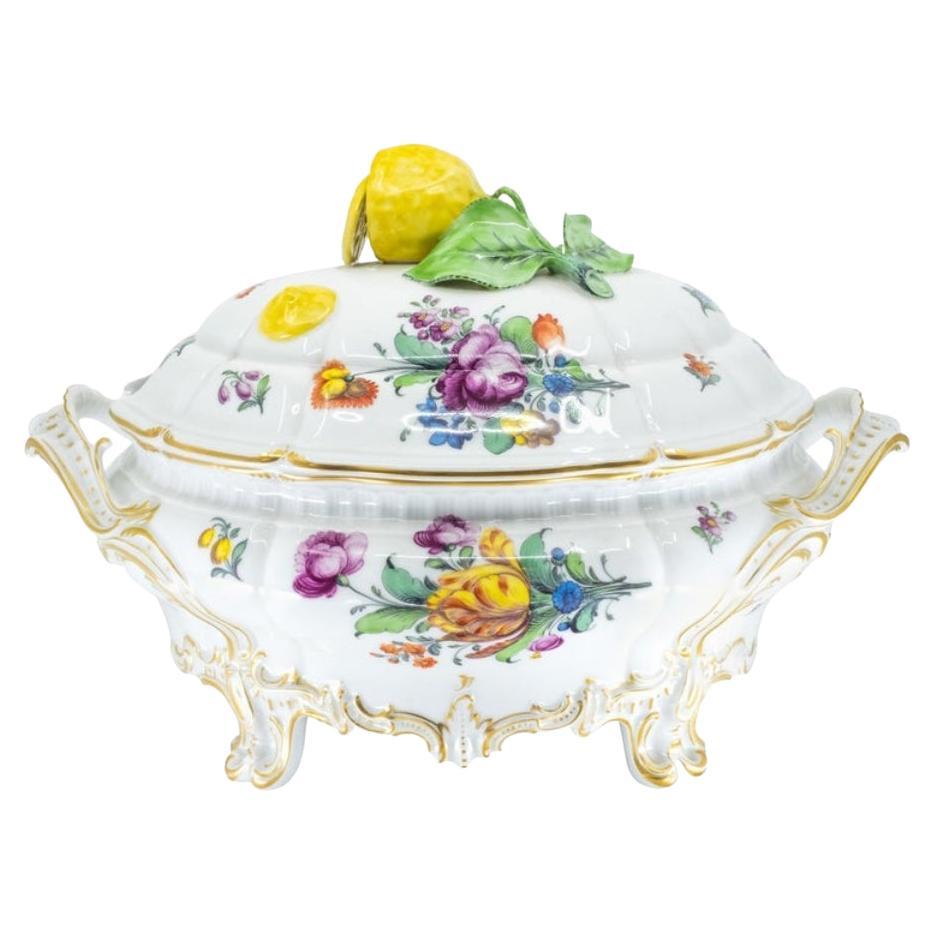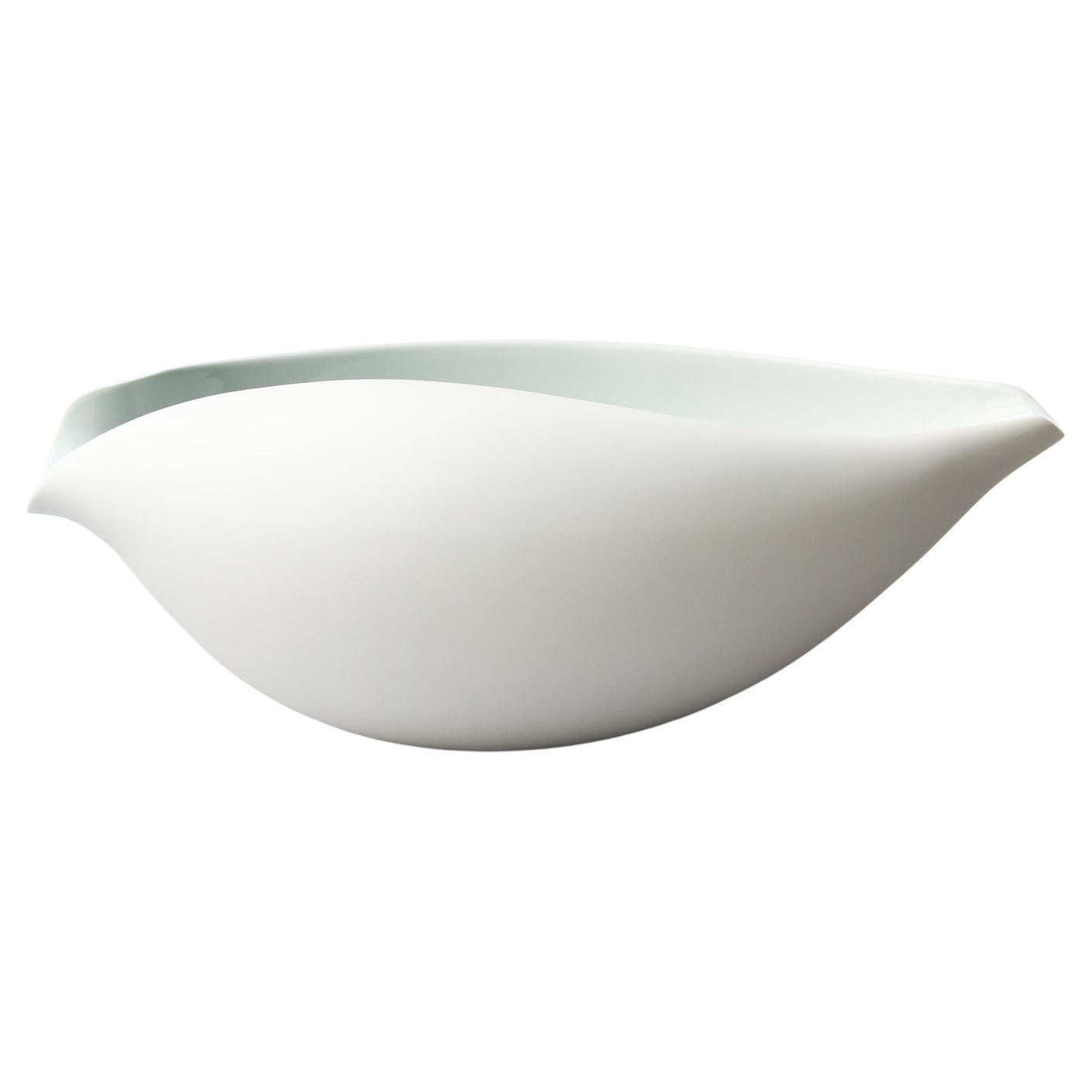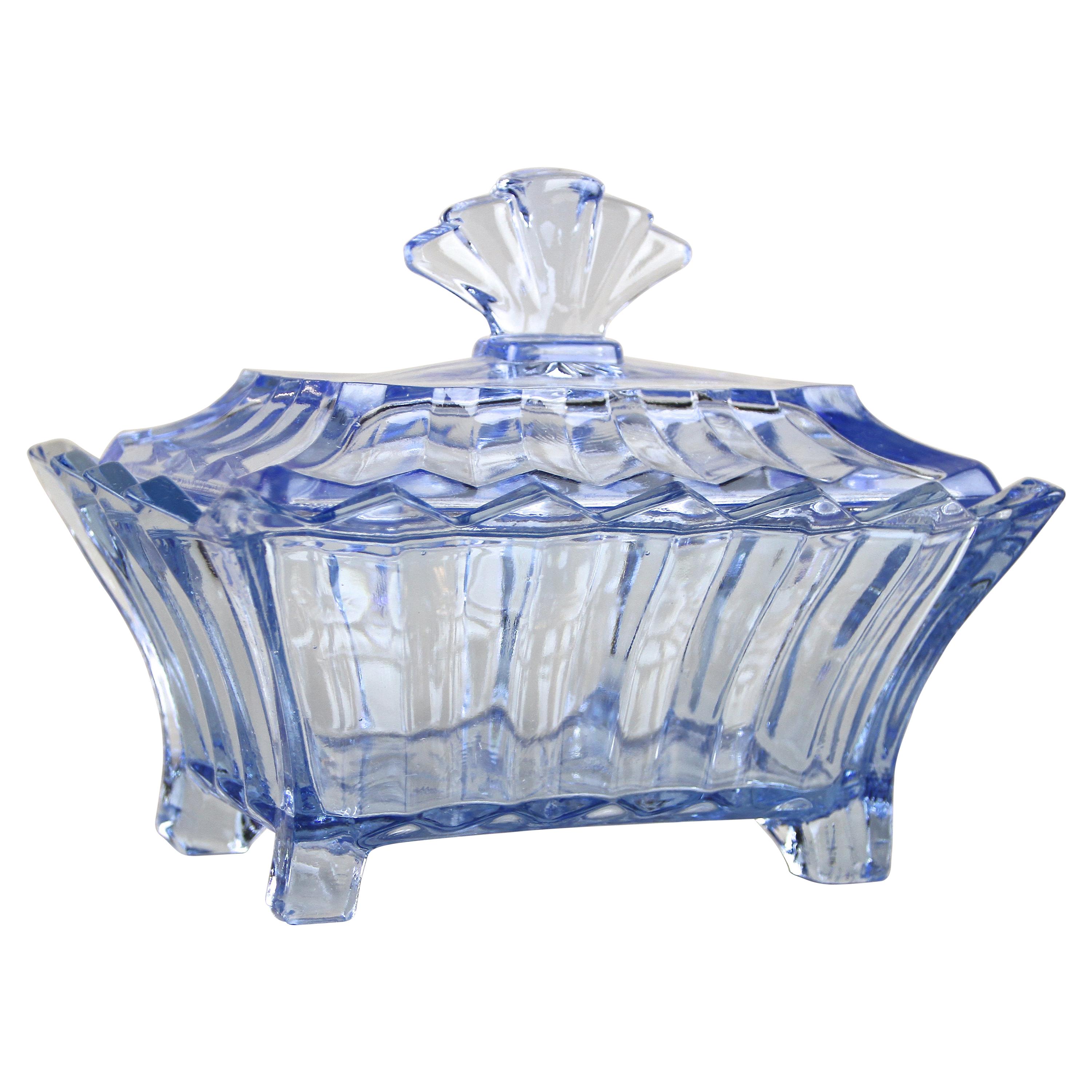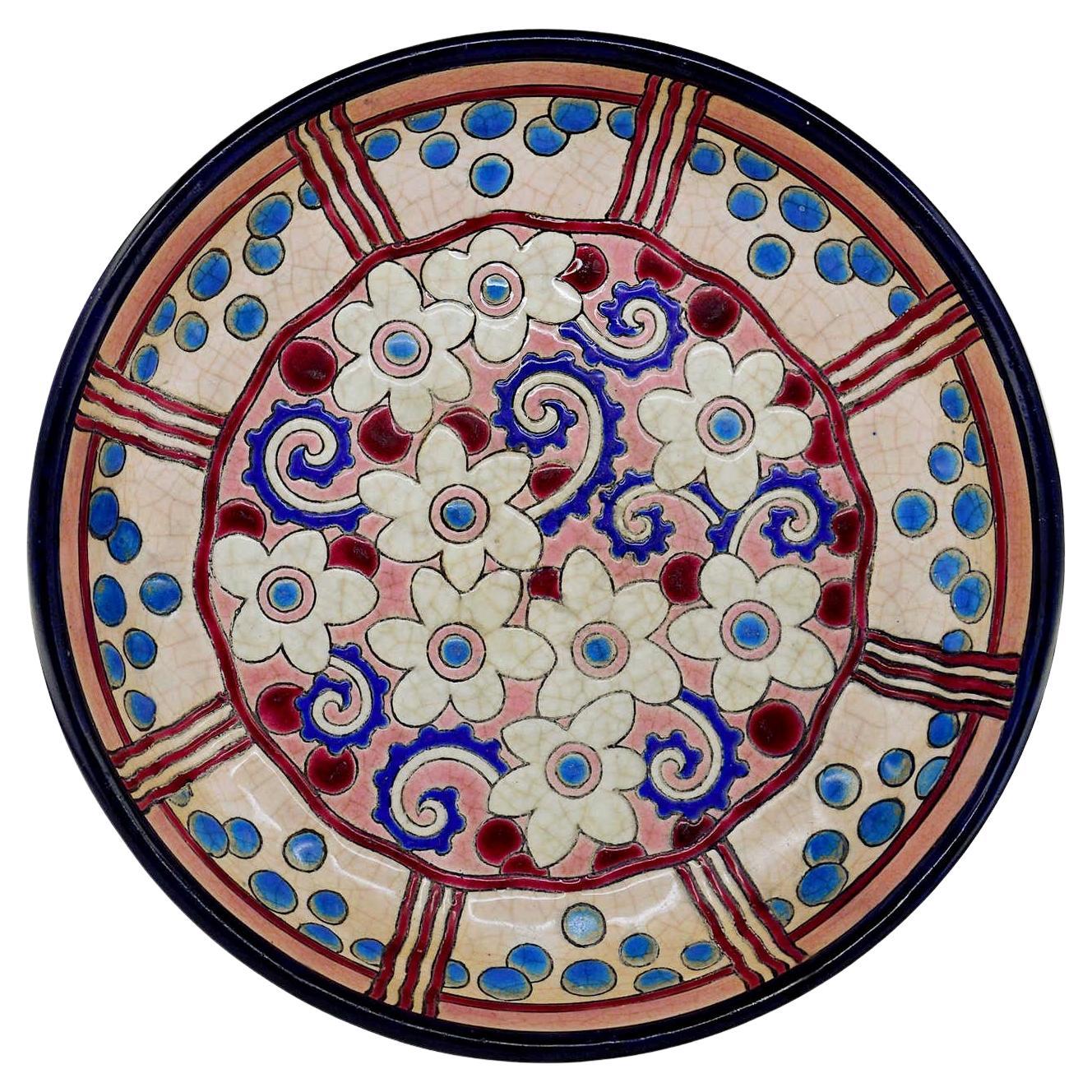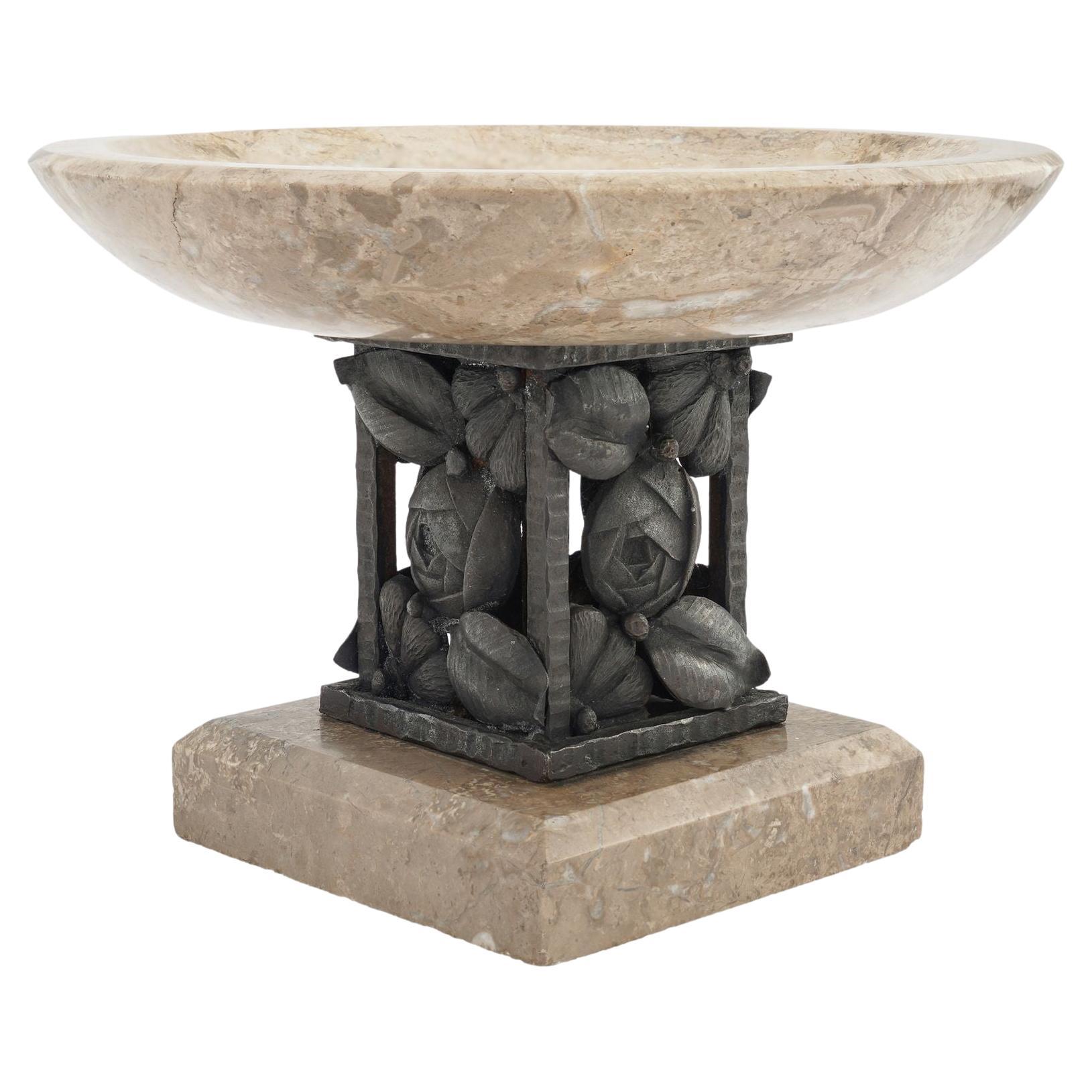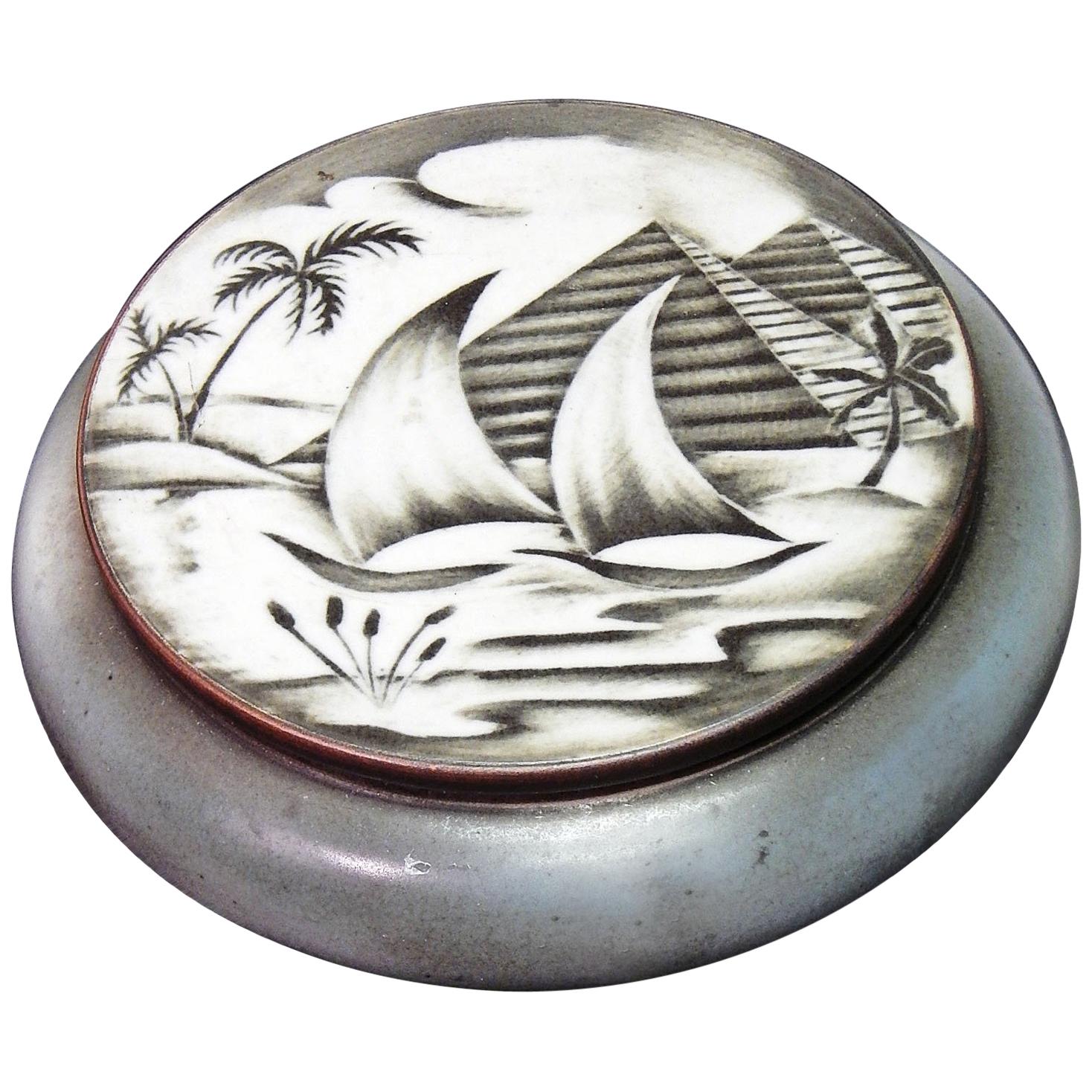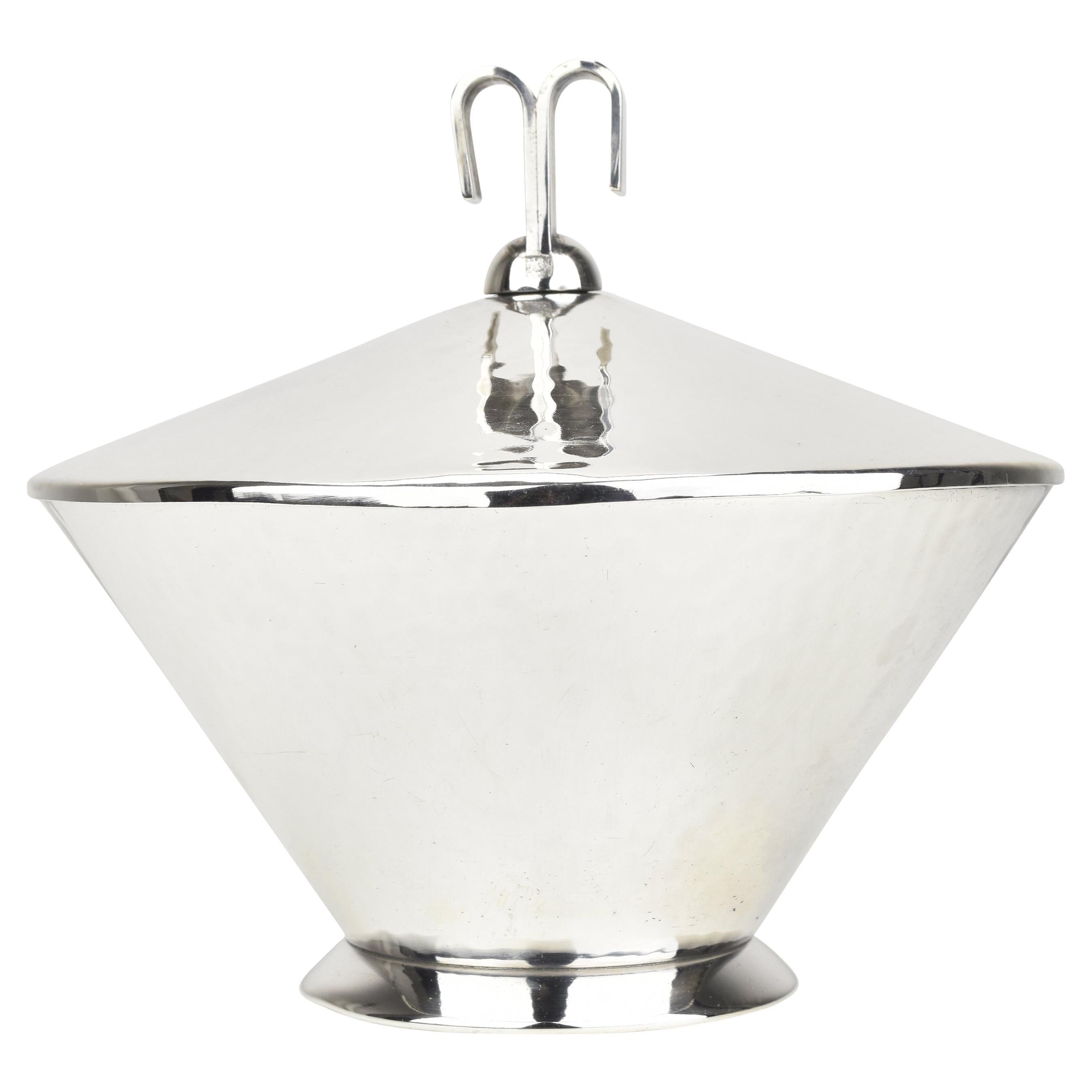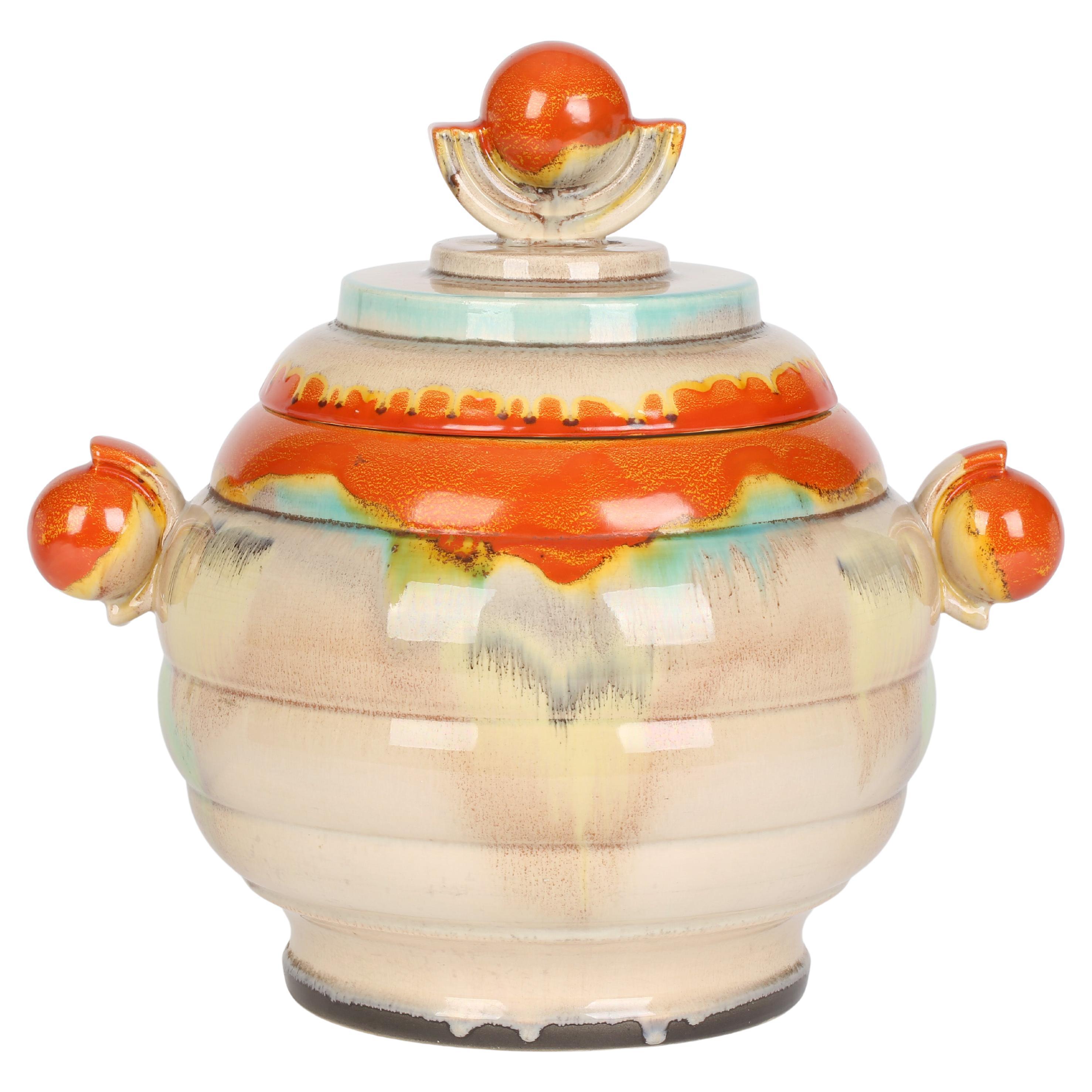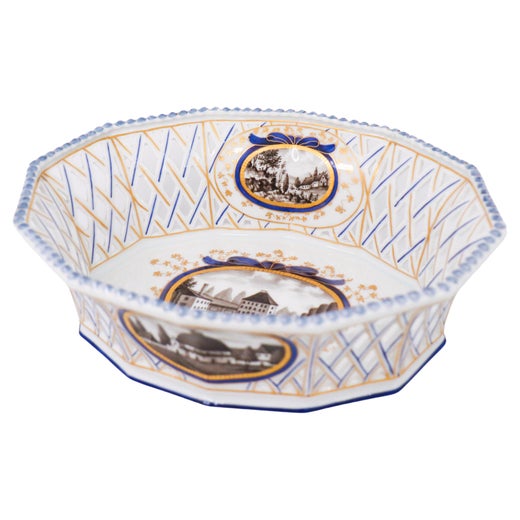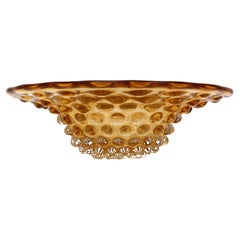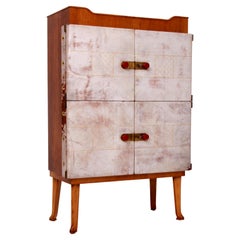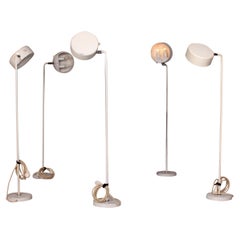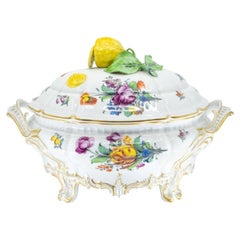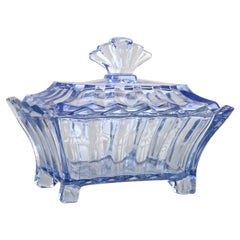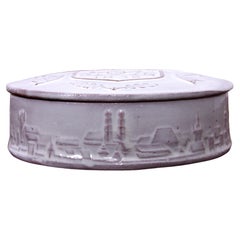
rare Nymphenburg lidded box art deco 1835 - 1935 100 years Munich attractions
View Similar Items
rare Nymphenburg lidded box art deco 1835 - 1935 100 years Munich attractions
About the Item
- Creator:Nymphenburg Porcelain (Maker)
- Dimensions:Height: 1.78 in (4.5 cm)Diameter: 5.52 in (14 cm)
- Style:Mid-Century Modern (Of the Period)
- Materials and Techniques:Pottery,Glazed
- Place of Origin:
- Period:
- Date of Manufacture:1935
- Condition:
- Seller Location:Kumhausen, DE
- Reference Number:1stDibs: LU8587235268652
Nymphenburg Porcelain
Nymphenburg — one of Europe’s most venerable porcelain factories — was founded near Munich in 1747 by Maximilian III Joseph, the elector of Bavaria. It didn’t begin producing under the name we know today, however, until 1761, when it was moved to Nymphenburg Palace.
Porcelain was invented in East Asia around 2,000 years ago, and its formula, which requires a special clay called kaolin, became a closely guarded secret. It wasn’t until the early 1700s that chemists at Meissen, Germany, in the employ of Augustus II the Strong, the elector of Saxony, discovered a process for making true, as opposed to soft-paste, porcelain. Soon factories across Europe were producing fine porcelain services and sculpture for an elite clientele.
Nymphenburg was one of these factories, manufacturing elaborate services for dinner, dessert, coffee and tea, and sculptures for the Bavarian nobility. Round objects, such as Nymphenburg plates and vases, were turned on potter’s wheels, while more complex ones, like figures, were slip cast in molds. This technique ensured that the pieces’ dimensions were precise and consistent. Once shaped, they were fired and, after that, hand-decorated by experienced china painters, who finished each to exacting standards.
Among Nymphenburg’s most famous objects are its lively and charming Rococo-style figurines, most often depicting Commedia dell'Arte characters or exotic Chinese figures. Today, the company makes versions of its historic figurines with updated forms and decorations by such designers as Christian Lacroix and Vivienne Westwood.
It also still makes one of its earliest, and eternally popular, china patterns: the floral Cumberland, created in 1765 by Franz Anton Bustelli as the electoral court service. Cumberland is one of more than 20,000 patterns housed today in Nymphenburg’s archive, enabling owners of incomplete sets to find replacements. In addition, the company has engaged contemporary designers such as Ted Muehling and Hella Jongerius to create witty new designs that celebrate the firm’s history while giving it a fresh spin.
Find authentic Nymphenburg Porcelain decorative objects, tableware and other items on 1stDibs.
- Barovier Seguso & Ferro Murano heavy Art Glass Bowl Honey Amber Italy 1940sBy Barovier Seguso & FerroLocated in Kumhausen, DEA beautiful heavy Murano art glass bowl by Barovier Seguso & Ferro in honey yellow amber colour, Italy, circa mid / late 1940s It stays in very good original condition - with a ve...Category
Vintage 1940s German Mid-Century Modern Decorative Bowls
MaterialsArt Glass
- Rare László Hoenig London Art Deco Mirrored Drinks Bar Cabinet Leather MapleBy Laszlo HoenigLocated in Kumhausen, DEEnglish: A rare straight designed bar cabinet by László Hoenig the 4 front doors are lined with goat skin - brassed fittings - bakelite handles - mirrored inside it comes with its ...Category
Vintage 1940s English Art Deco Dry Bars
MaterialsLeather, Mirror, Maple
$3,690 Sale Price37% Off - Anders Pehrson Ateljé Lyktan SWEDEN set of 5 floor lamps f. Olympia 1972 MunichLocated in Kumhausen, DEAnders Pehrson for Ateljé Lyktan FLOOR LAMP "OLYMPIA" set of five floor lamps recommended with 2 E14 bulbs 25W and 40W as the lamp can be switched in...Category
Vintage 1970s Swedish Mid-Century Modern Floor Lamps
MaterialsMetal
- Art Nouveau Southern French Fayance art pottery FLOOR VASE rare colours&patternLocated in Kumhausen, DEA giving joy beautiful French Fayence Floor Vase fantastic Art Nouveau pattern - Impressing Colours Manufacturer unknown - marked Design Period 1915 - 1925 Country of Manufacture : France H / height: 46 cm ~ Gew. / weight: 4550 grs DM / diameter max: 28 cm ~ DM oben / diameter inner rim: 19.8 cm .... an ode to Southern France A Legend of Provence by Adelaide Anne Procter (30 October 1825 – 2 February 1864) The lights extinguished, by the hearth I leant, Half weary with a listless discontent. The flickering giant-shadows, gathering near, Closed round me with a dim and silent fear. All dull, all dark; save when the leaping flame, Glancing, lit up a Picture's ancient frame. Above the hearth it hung. Perhaps the night, My foolish tremors, or the gleaming light, Lent power to that Portrait dark and quaint, — A Portrait such as Rembrandt loved to paint, — The likeness of a Nun. I seemed to trace A world of sorrow in the patient face, In the thin hands folded across her breast: — Its own and the room's shadow hid the rest. I gazed and dreamed, and the dull embers stirred, Till an old legend that I once had heard Came back to me; linked to the mystic gloom Of that dark Picture in the ghostly room. In the far south, where clustering vines are hung; Where first the old chivalric lays were sung; Where earliest smiled that gracious child of France, Angel and knight and fairy, called Romance, I stood one day. The warm blue June was spread Upon the earth; blue summer overhead, Without a cloud to fleck its radiant glare, Without a breath to stir its sultry air. All still, all silent, save the sobbing rush Of rippling waves, that lapsed in silver hush Upon the beach; where, glittering towards the strand The purple Mediterranean kissed the land. All still, all peaceful; when a convent chime Broke on the mid-day silence for a time, Then trembling into quiet, seemed to cease, In deeper silence and more utter peace. So as I turned to gaze, where gleaming white, Half hid by shadowy trees from passers' sight, The Convent lay, one who had dwelt for long In that fair home of ancient tale and song, Who knew the story of each cave and hill, And every haunting fancy lingering still Within the land, spake thus to me, and told The Convent's treasured Legend, quaint and old: — Long years ago, a dense and flowering wood, Still more concealed where the white convent stood, Borne on its perfumed wings the title came: " Our Lady of the Hawthorns " is its name. Then did that bell, which still rings out to-day, Bid all the country rise, or eat, or pray. Before that convent shrine, the haughty knight Passed the lone vigil of his perilous fight; For humbler cottage strife or village brawl, The Abbess listened, prayed, and settled all. Young hearts that came, weighed down by love or wrong, Left her kind presence comforted and strong. Each passing pilgrim, and each beggar's right Was food, and rest, and shelter for the night. But, more than this, the Nuns could well impart The deepest mysteries of the healing art; Their store of herbs and simples was renowned, And held in wondering faith for miles around. Thus strife, love, sorrow, good and evil fate, Found help and blessing at the convent gate. Of all the nuns, no heart was half so light, No eyelids veiling glances half as bright, No step that glided with such noiseless feet, No face that looked so tender or so sweet, No voice that rose in choir so pure, so clear, No heart to all the others half so dear, So surely touched by others' pain or woe, (Guessing the grief her young life could not know,) No soul in childlike faith so undefiled, As Sister Angela's, the " Convent Child. " For thus they loved to call her. She had known No home, no love, no kindred, save their own. An orphan, to their tender nursing given, Child, plaything, pupil, now the Bride of Heaven And she it was who trimmed the lamp's red light That swung before the altar, day and night; Her hands it was whose patient skill could trace The finest broidery, weave the costliest lace; But most of all, her first and dearest care, The office she would never miss or share, Was every day to weave fresh garlands sweet, To place before the shrine at Mary's feet. Nature is bounteous in that region fair, For even winter has her blossoms there. Thus Angela loved to count each feast the best, By telling with what flowers the shrine was dressed. In pomp supreme the countless Roses passed, Battalion on battalion thronging fast, Each with a different banner, flaming bright, Damask, or striped, or crimson, pink, or white, Until they bowed before a newborn queen, And the pure virgin Lily rose serene. Though Angela always thought the Mother blest Must love the time of her own hawthorn best, Each evening through the years, with equal care, She placed her flowers; then kneeling down in prayer, As their faint perfume rose before the shrine, So rose her thoughts, as pure and as divine. She knelt until the shades grew dim without, Till one by one the altar lights...Category
Vintage 1910s French Art Nouveau Vases
MaterialsPottery
$1,739 Sale Price36% Off - Art Deco Tea Service by Carstens Uffrecht ar 1930 uranium glaze + cups + platesBy Carstens TönnieshofLocated in Kumhausen, DEA Tea Service by CARSTENS UFFRECHT 1930s (and not Carstens Tönnieshof which emerged from this company and was founded later) Serie HAWAI All items on photos are included in this off...Category
Vintage 1930s German Mid-Century Modern Tea Sets
MaterialsPottery
- Art Deco Floor Vase Attr to Michael Powolny Wiener Keramik Schleiss GmundenBy Michael PowolnyLocated in Kumhausen, DEArt Deco floor vase attr. to Michael Powolny / Wiener Keramik / Schleiss Keramik Gmunden „Vereinigte Wiener und Gmundner Keramik und Gmundner Tonwarenfabrik Schleiss, Ges.m.b.H.“ height: 52cm - diameter: 32.5cm - diameter rim: 16.5cm - weight: 7.7 kg From a noble estate in Linz / Austria - in amazing good condition Michael Powolny Michael Powolny (* 18. September 1871 in Judenburg, Österreich-Ungarn; † 4. Jänner 1954 in Wien) war ein österreichischer Keramikdesigner, Bildhauer und Medailleur. Leben Nach Abschluss einer Hafnerlehre besuchte Powolny von 1891 bis 1894 die Fachschule für Tonindustrie in Znaim, daran anschließend von 1894 bis 1901 die Wiener Kunstgewerbeschule. 1906 gründete er gemeinsam mit Bertold Löffler die Wiener Keramik, deren Vertrieb bereits nach etwa einem Jahr von der Wiener Werkstätte übernommen wurde. 1913 kam es zum Zusammenschluss der Wiener Keramik mit der Gmundner Keramik (Vereinigte Wiener und Gmundner Keramik und Gmundner Tonwarenfabrik Schleiss Gesellschaft m. b. H.). Michael Powolny wirkte von 1909 bis 1936 als Lehrer an der Kunstgewerbeschule. Seine Arbeiten, die ab 1929 dem Art déco zugeordnet werden können,[1] wurden auf zahlreichen internationalen Ausstellungen gezeigt und erzielen bei Sammlern hohe Preise. Powolny wurde von Josef Hoffmann bei der Ausstattung des Cabaret Fledermaus und des Palais Stoclet sowie bei der Gestaltung mehrerer großer Villenbautenin Wien herangezogen. Auch der Entwurf für die neue österreichische Ein- und Zwei-Schilling-Münze von 1946 bis 1952 stammt von Powolny. Er stand 1944 in der Gottbegnadeten-Liste des Reichsministeriums für Volksaufklärung und Propaganda. Anlässlich seines 80. Geburtstages wurde Powolny 1951 mit der Ehrenmedaille der Bundeshauptstadt Wien ausgezeichnet. Powolny wurde in einem ehrenhalber gewidmeten Grab auf dem Wiener Zentralfriedhof bestattet. 1965 wurde im 22. Wiener Gemeindebezirk die Powolnygasse nach ihm benannt. Gmundner Keramik – Schleiss Keramik Die „Gmundner Keramik“, wie wir sie heute kennen, ging aus einem im Jahr 1903 von Leopold Schleiss unter dem Namen „Gmundner Thonwaren-Fabrik“ (anfangs Thonwaren mit „h“) errichteten Betrieb in Traunleiten, heute Keramikstraße Gmunden, hervor. Schon im Jahre 1843 kauften die Eltern von Leopold Schleiss in Gmunden die „Hafnerhäuser am See“, heute Theatergasse 14 und 16, und übten dort ihr Hafnergewerbe aus. 1883 übernahm Leopold die gut gehende und deshalb bald an ihre räumlichen Grenzen stoßende Werkstätte. Dies führte zum Kauf eines Grundstückes im oberhalb von Gmunden gelegenen Traunleiten, auf dem 1903 eine neue Fabrikationsstätte errichtet wurde. Leopolds Sohn Franz Schleiss II (geb. 1884) zeigte großes handwerkliches und künstlerisches Talent und entwickelte sich zum überzeugten Vertreter der um die Jahrhundertwende aufkommenden neuen Kunstströmungen. Bereits 1907 waren mehrere Künstler und Künstlerinnen für das Unternehmen tätig, und Fayencen wie Kleinplastiken wurden auf Ausstellungen gezeigt. Nach seiner 1909 erfolgten Verehelichung mit der akademischen Bildhauerin Emilie Simandl, gründete er mit ihr 1910 die „Keramische Werkstätte F. u. E. Schleiss, Gmunden“. 1913 kam es zum Zusammenschluss mit der „Wiener Keramik“. Der neue Firmenname lautete „Vereinigte Wiener und Gmundner Keramik und Gmundner Tonwarenfabrik Schleiss, Ges.m.b.H.“. Die Modelle der „Wiener Keramik“ von Powolny, Löffler und anderen Künstlern gehörten nun zum künstlerischen Bestand des Unternehmens. Nach einer Zeit unglaublicher Vielfalt und Fülle an außergewöhnlichen Keramiken kam es mit Beginn des Ersten Weltkrieges, im Rahmen der am Anfang des Krieges herrschenden Hochstimmung, zu einer Sortiment Erweiterung mit „patriotischer Kunst“. Bald aber machte sich das Fehlen von zum Kriegsdienst eingezogenen Arbeitskräften bemerkbar. Mit der Gründung einer „Lehrwerkstätte für Keramik, Schleiss Schule“ steuerte Franz Schleiss dagegen und holte auf diese Weise neue Mitarbeiter in die Firma. Nach Kriegsende erzeugte er mit einigen Absolventen der Schule Unikatkeramiken, die in der „Gmundner Werkstätte, registrierte Genossenschaft m.b.H.“ erzeugt und gemeinsam mit der „Gmundner Keramik“ vertrieben wurden. 1923 wurde die „Gmundner Keramik“ in eine Aktiengesellschaft umgewandelt und firmierte nun unter „Gmundner Keramische Werkstätten A.-G.“. Meinungsverschiedenheiten führten 1926 zum Austritt des Ehepaares Schleiss, welches daraufhin die „Josefine Schleiss Gmundner Keramik“, die spätere „Schleiss Keramik“, und in Deutschland die „Münchner Werkstätte...Category
Vintage 1930s Austrian Art Deco Vases
MaterialsPottery
- Nymphenburg Porcelain Tureen with LemonBy Nymphenburg PorcelainLocated in Lantau, HKhand painted porcelain with floral design and a lemon finial on the lid; the rims are gilded. This piece is inspired by Meissen examples of the mid-18th century. The shape of the Tur...Category
Early 20th Century German Soup Tureens
MaterialsPorcelain
- Ted Muheling Nymphenburg Porcelain Volute BowlBy Nymphenburg Porcelain, Ted MuehlingLocated in Roma, ITTed Muehling for Nymphenburg porcelain volute bowl. The bowl features a white bisque exterior & glazed interior. It measures approximately 7 1/2? x 4? & 2 1/2" in height. Nymphe...Category
Early 2000s Decorative Dishes and Vide-Poche
MaterialsPorcelain
- Art Deco Blue Glass Box with Lid, Austria, circa 1920Located in Lichtenberg, ATExclusive blue Art Deco glass box with Lid from the period in Austria around 1920. This very decorative, lovely blue pressed glass box impresses wit...Category
Mid-20th Century Austrian Art Deco Decorative Bowls
MaterialsGlass
- Longwy French Art Deco Ceramic Bowl, 1935By Faïenceries et Emaux de LongwyLocated in Saint-Amans-des-Cots, FRFrench Art Deco ceramic bowl by Longwy, France, 1930s. Measures: Diameter 10.6" (26.9cm), height 3" (7.7cm). Incised mold number "3021" and stamped pattern number "D.5415", 1925 Long...Category
Vintage 1930s French Art Deco Decorative Bowls
MaterialsCeramic
- French Art Deco marble & bronze tazza, 1935Located in Kenilworth, ILMarble and bronze Art Deco tazza. The cast bronze dish support features four alternating panels with a highly detailed flower surrounded by leaves that both overlap and recess around...Category
Early 20th Century Decorative Bowls
MaterialsMarble, Bronze
- Rectangular Lidded Walnut BoxLocated in Los Angeles, CAHand carved rectangular lidded walnut box. The box showcases a beautifully hand scalloped wood interior with an inset base that offers a fun groove detail. Signed by the artist - "RO...Category
Mid-20th Century Mid-Century Modern Decorative Boxes
MaterialsWalnut
